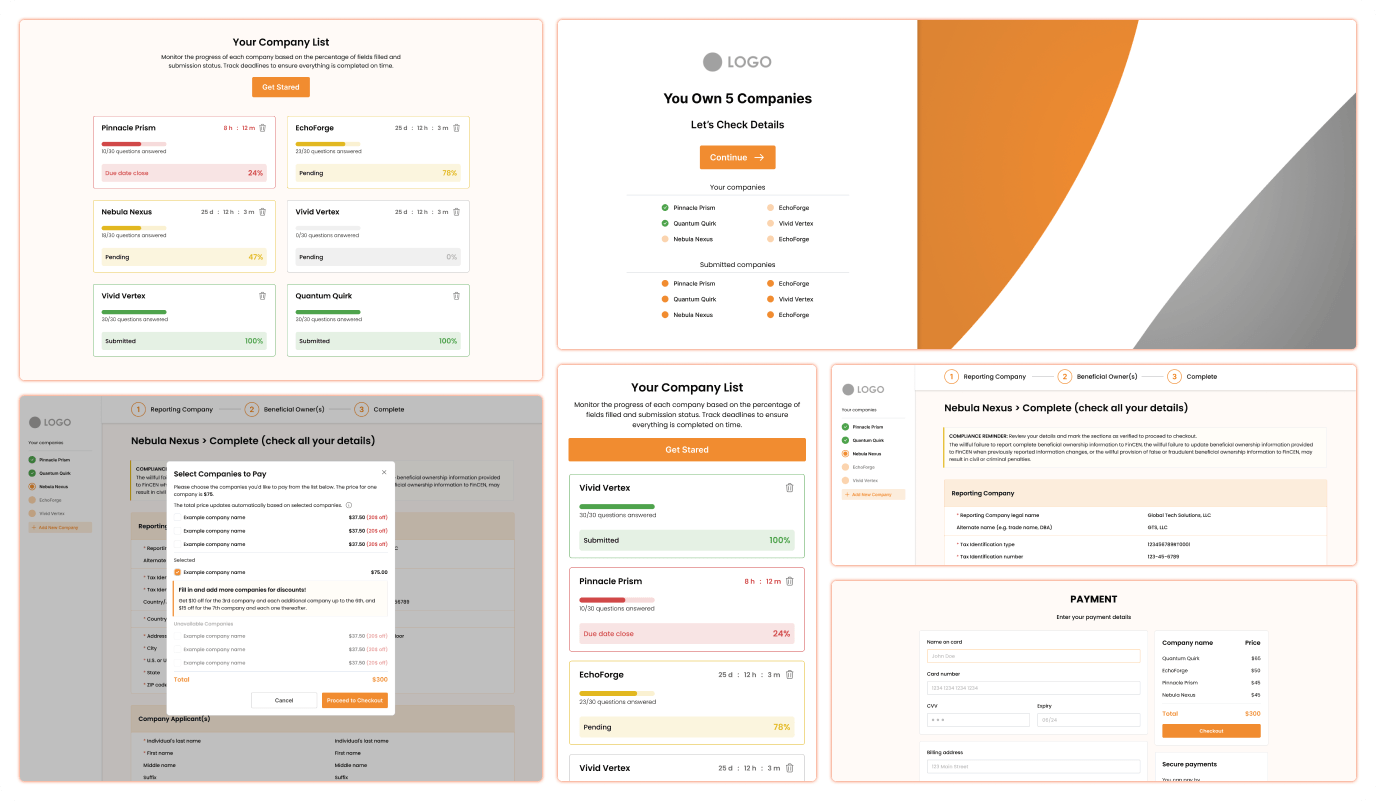The Main Problem We Need to Solve
In the United States, the Initial Report for tax purposes must be filed with the US government through the E-BOI system. However, the process is often cumbersome and inefficient, requiring significant time from accountants who handle these reports on behalf of their clients. Many businesses, due to the complexity and difficulty of filing out these reports, turn to their accounting firms for assistance. This results in a time-consuming process for accountants, as they must manually fill out each report for each client, often dealing with repetitive data entry.
The Filing System was created to address this problem by automating the report filing process. It allows accountants to quickly generate reports by importing data directly from their existing customer base, reducing the time spent on data entry.
Both accountants and users can fill in the remaining data needed to complete the report. The system streamlines the process by allowing users to import existing customer data, leaving only the information specific to the current year to be manually entered. This approach simplifies the report-filing process for both parties, making it more seamless and efficient, while significantly reducing the workload for accountants and improving overall productivity.
How We Created the Design: Key Points
Our design approach was guided by the principle of simplicity and ease of use. We aimed to create an intuitive and structured experience for the user, enabling accountants to fill out reports quickly and accurately using a step-by-step tax report filing tool..
The key points in the design are:
- Step-By-Step Process: The report filing process is divided into clear, manageable steps to make the process intuitive and straightforward for users. Each step focuses on gathering specific information, reducing cognitive load.
- Pre-Filled Data: We leveraged existing data from the accounting firm's customer base to automatically fill in the fields, allowing the accountant to focus only on the unique data for each specific year. This significantly reduces repetitive data entry.
- Dashboard: A central dashboard provides a clear view of each report’s status, helping users stay organized and track their progress.
- Simplified interaction: By focusing on clarity, the design provides users with a comprehensive understanding of what they need to do and where they are in the process. The interface is designed to minimize complexity and ensure efficiency, while also being accessible and user-friendly for all age ranges. This ensures that every person, regardless of their age or technical skill level, feels comfortable using the system and has no difficulties understanding the flow.
SITE MAP
The site map serves as a navigational blueprint, outlining the structure and hierarchy of website.
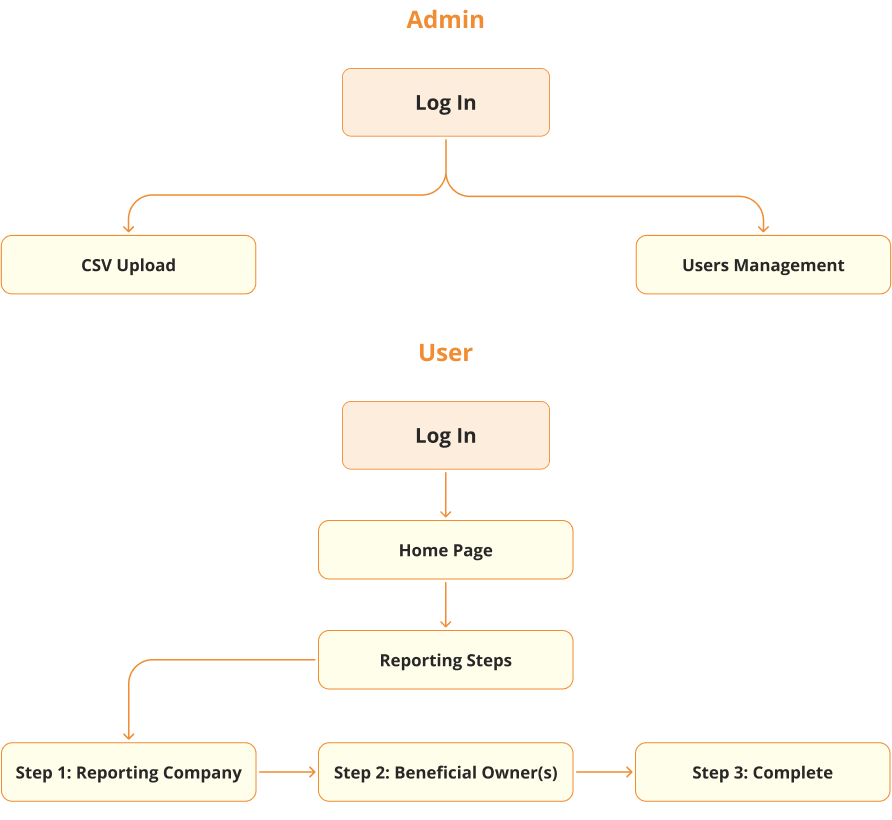
What we use and why?
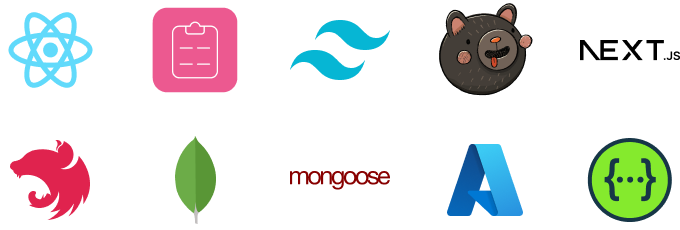
For the backend , we use NestJS, a scalable framework built with TypeScript, which provides a robust structure for building efficient and maintainable server-side applications. It integrates seamlessly with MongoDB (via Mongoose) as our database, ensuring easy management of data while offering flexibility and scalability. The Azure cloud platform is utilized for hosting, providing a reliable and scalable infrastructure to support the application's growth. Swagger is used for API documentation, making integration and communication between frontend and backend teams easier. Additionally, we implement CI/CD pipelines to ensure continuous integration and continuous deployment, allowing for automated testing, builds, and deployments for smoother updates and faster release cycles.
On the frontend, we rely on React with Tailwind CSS for building a responsive, user-friendly interface. React Hook Form ensures efficient form handling and validation, while MySQL database using the Zustand is used for state management, providing a lightweight and flexible solution. To improve user experience and provide instant feedback, we integrate React Hot Toast for notifications. NextJS is chosen for its server-side rendering capabilities, improving SEO and performance.
At the end of the process, when the user submits the report, we generate an XML filecontaining the report data, which is then sent to the US government API for submission. This ensures that the data is properly formatted and meets the required standards for official processing.
The key points in the design are:
- Data Fetching: By using React Query and Axios, we manage server communication efficiently, fetching data asynchronously and caching it to improve performance and responsiveness.
- Form Validation: We use Zod for schema-based validation in the frontend, ensuring that the data entered by users meets the required criteria before submission.
- CSV Data Import: Using Fast CSV and CSV Parser, we enable admins to upload CSV files, allowing seamless import of company data into the system for report generation.
- State Management: We use Zustand for handling the global state, offering a minimalistic and efficient solution that scales well as the application grows.
- User Notifications: React Hot Toast provides real-time user notifications for status updates, such as report submission approval or rejection, ensuring users are informed at every step.
- Report Submission: Axios is used to send report data to the backend, while NestJS handles the API calls and processes the data on the server side, ensuring smooth communication between the frontend and backend. When the user submits the report, we generate an XML file with the necessary data and send it to the government API for processing.
- Email Notifications: We utilize SendGrid for sending transactional emails, keeping users informed about report status changes, delays, or rejections.
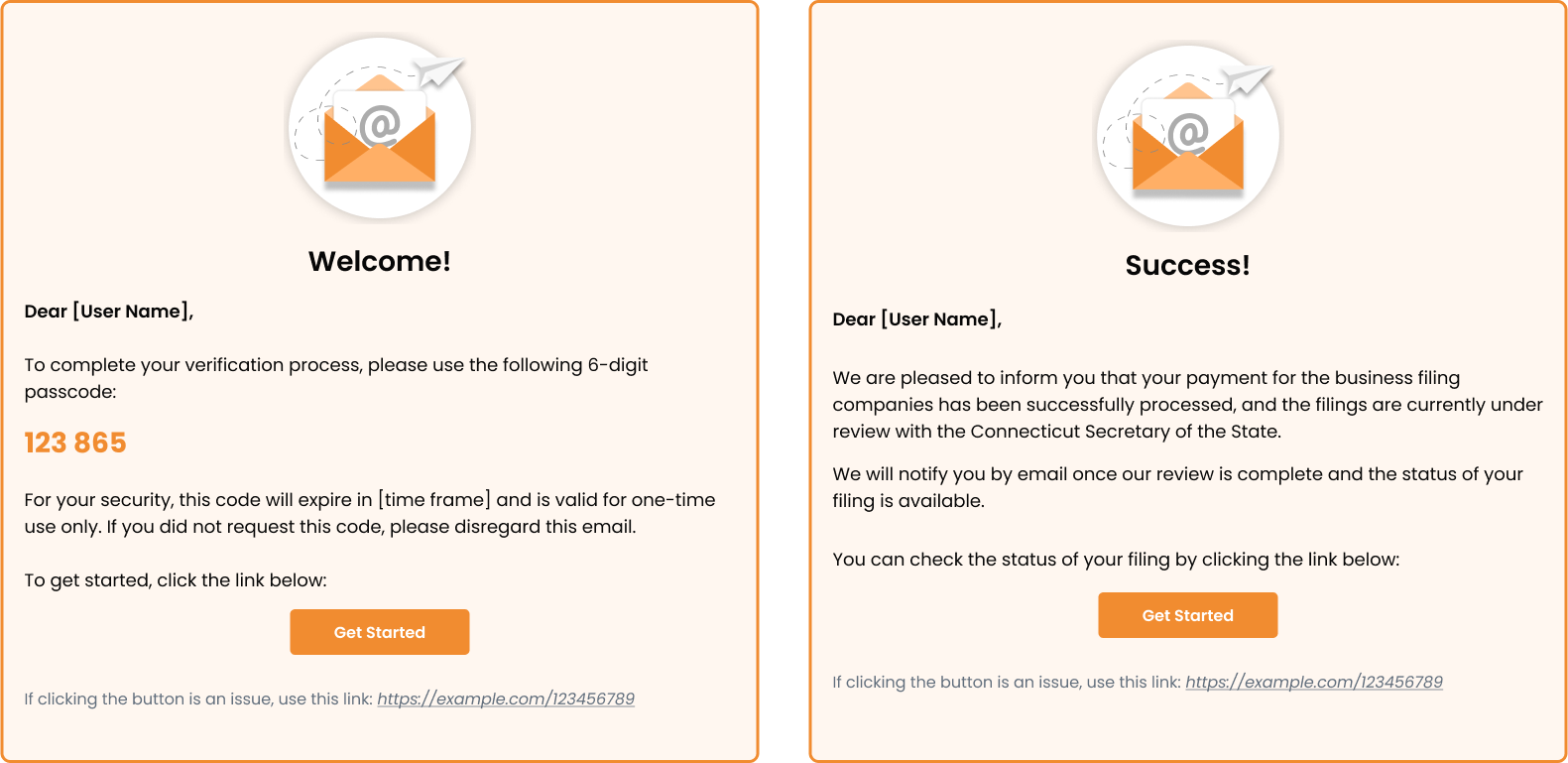
- Testing & Code Quality: On the backend, we use ESLint and Prettier to maintain high code quality and consistency throughout the project. These tools are also used on the frontend to ensure that the code remains clean, readable, and aligned with best practices across both sides of the application.
Features
The Filing System provides the following features to enhance usability and automation:
- Report Dashboard: Users can view the status of reports in real-time, including statuses such as “Due Date Close,” “Pending - Sent,” “Pending - In Progress,” and “Submitted - Approved by Government.”
This is one of the best tax report dashboards for accountants, designed to maximize clarity and efficiency.
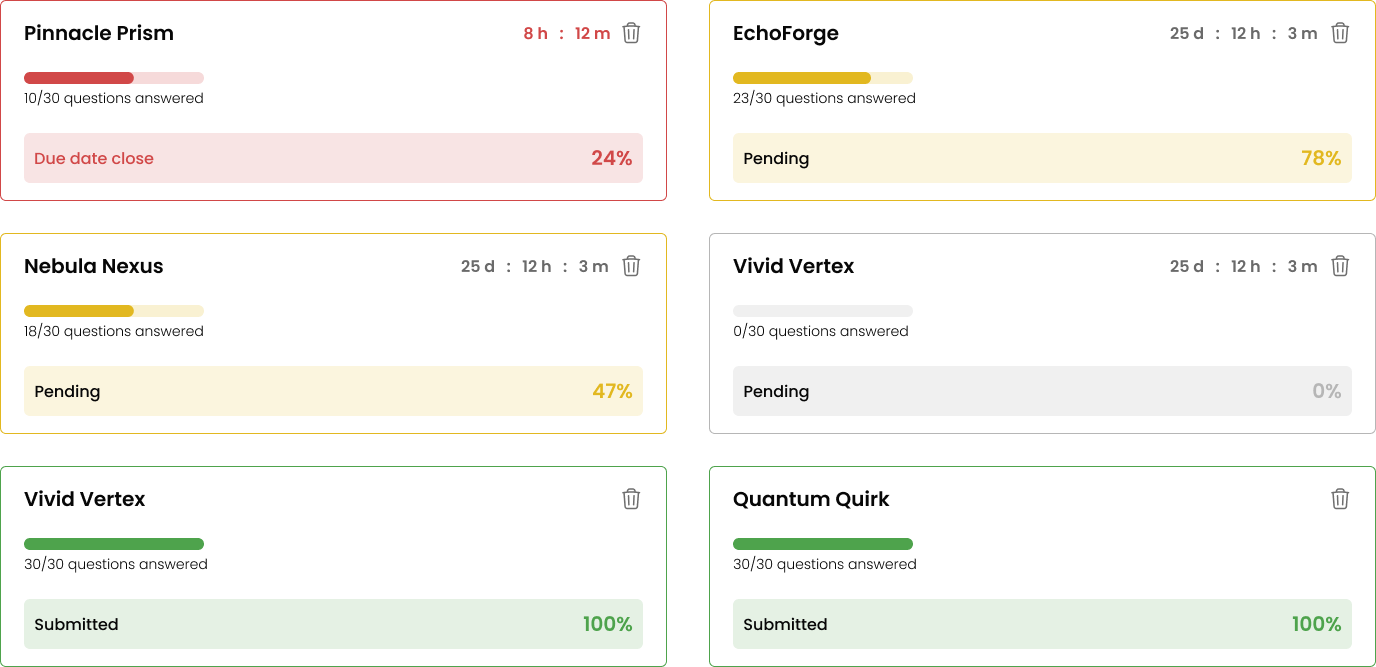
- Automated Report Generation: Allows accountants to import pre-existing customer data into reports, minimizing data entry time.
- User Management: Admins (accountants) can invite company owners to fill out their reports within the system.
- CSV Import: Admins can upload CSV files to import data (Tax Identification Type, Tax Identification Number, Company Name) directly into the system for easy report filing.
This feature works as an accountant client CSV import US tax report solution, speeding up the filing process.
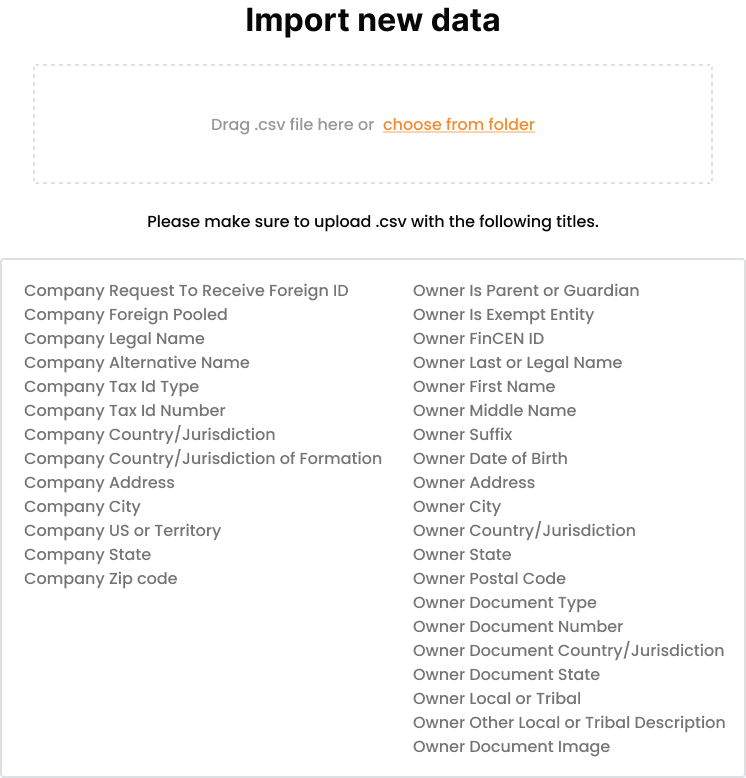
- Payment Integration with Stripe: The system integrates with Stripe to handle payments, ensuring a secure and seamless payment experience for accounting firms and their clients when accessing the service.
- Step-by-step Guidance: The report filing process is broken down into manageable steps to make it easier for users to complete their reports accurately.

- Custom Notifications: Users are notified every day in case of delays, and receive emails upon approval or rejection of their report by the government.
Our Solution
Our solution streamlines the entire reporting process by automating data entry, reducing manual effort, and improving the user experience for both accountants and their clients. By creating an easy-to-use interface and automating as much of the process as possible, we’ve solved the major pain points:
- Efficiency: The system reduces the amount of time accountants spend filing out reports by automating data entry.
- Clarity: The best tax report dashboard for accountants combined with the step-by-step tax report filing tool helps accountants track their progress and understand where they are in the process at all times.
- Communication: Constant email notifications ensure that users are always up-to-date on the status of their reports, reducing the need for follow-up.
- Integration: The ability to accountant client CSV import US tax report streamlines the process, reducing the risk of errors and improving the speed of report generation.
Conclusion
The Filing System provides a streamlined solution to a complex problem faced by accountants in the US tax reporting process. By automating much of the data entry and leveraging existing customer data, the system allows for faster and more accurate report filing. This tax reporting system case study demonstrates how a carefully designed solution can transform the efficiency of report submissions.
In conclusion, the Filing System not only reduces time and effort for accountants but also provides a more efficient, user-friendly way to handle the complexities of US tax report submissions.

